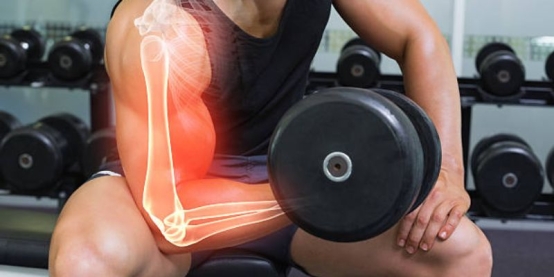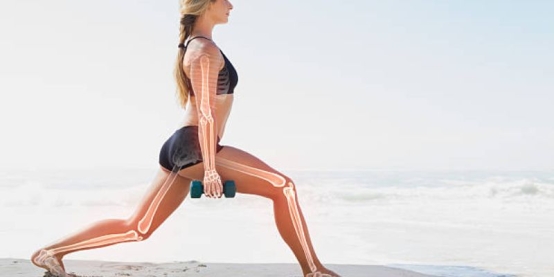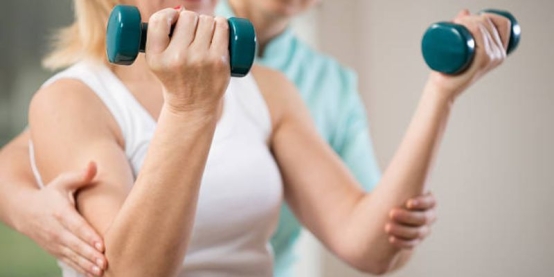Natural Ways to Strengthen Bones as You Age
Aging is often associated with wisdom, experience—and unfortunately, gradual bone weakening. After the age of 40–50, bone density begins to decline, making fractures, osteoporosis, and mobility loss more likely. Given how painful and limiting bone breaks can become, it’s wise to focus early on natural, sustainable strategies to keep bones strong.
This article lays out clear, evidence-grounded guidance—nutrition, movement, habits, and smart supplementation—to support bone health as years go by.
Why Bone Health Matters in Midlife and Beyond
Bone is living tissue constantly remodeled through our lives. In youth, new bone formation outpaces breakdown, allowing accumulation of bone mass. But starting around menopause in women, and somewhat later in men, the balance shifts: bone resorption (breakdown) exceeds formation, gradually lowering bone density. Women may lose up to 20 % of bone density in the first 5–7 years after menopause.

As bones thin, the internal “honeycomb” structure grows more porous and outer walls get thinner, increasing vulnerability to fractures of the hip, spine, or wrist.
Fractures in older age often lead to chronic pain, loss of independence, and increased mortality. Because bone loss often proceeds silently (without pain), preventive action is essential.
Understanding Bone Loss: What’s Happening Inside
Bones are not static—they constantly remodel. Cells called osteoclasts break down old bone, while osteoblasts build new bone. In healthy adults, the two processes balance. Over time, that balance drifts: bone breakdown outpaces formation, especially in midlife and later.
Why does the balance shift?
Hormonal changes
In women, estrogen supports bone formation and slows resorption. After menopause, estrogen levels fall, tipping the balance toward breakdown. Men also experience gradual testosterone decline, which affects bone turnover.
Reduced nutrient absorption or intake
Aging may reduce absorption of calcium, vitamin D, and other micronutrients vital for bone health.
Less physical stress on bones
A sedentary lifestyle provides little mechanical stimulus for bone to stay strong—without stress (loading), bone remodeling slows.
Chronic inflammation and oxidative stress
These can accelerate bone loss via cellular pathways.
To support bone remodeling naturally means giving the body what it needs—nutrients, mechanical stimulus, hormonal balance, and avoidance of harmful habits—to slow or reverse the imbalance.
Eat for Bone Strength: Nutrients Your Bones Crave
Nutrition plays a foundational role in bone health. Long-term, consistent intake matters more than occasional extremes.
a. Calcium-Rich Foods (Beyond Dairy)
While dairy (milk, yogurt, cheese) is commonly promoted, many non-dairy foods deliver significant calcium—especially helpful for those who are lactose intolerant or prefer plant sources.
Leafy greens: e.g. collard greens, bok choy, kale
Seeds & nuts: almonds, sesame seeds, chia seeds
Small fish with bones: sardines, canned salmon
Fortified foods: plant milks, orange juice, tofu processed with calcium
Beans, lentils, figs often contribute modest calcium
Because the body maintains tightly regulated blood calcium, it’s better to supply moderate amounts all day than to overshoot in one meal. According to Bone Health & Osteoporosis Foundation, calcium intake of 1,000–1,200 mg daily (from food + supplements) is commonly recommended.
b. Vitamin D (The Calcium Helper)
Vitamin D helps the gut absorb calcium and supports bone remodeling by modulating osteoblast/osteoclast activity.
Sun exposure is the easiest natural means—ideally midday (10 a.m. to 2 p.m.), for perhaps 10–30 minutes of skin exposure depending on your skin tone and latitude.
Dietary sources: fatty fish (salmon, mackerel), egg yolks, mushrooms exposed to UV.
Many fortified foods (e.g. plant milks, cereals) are now enriched with vitamin D.
Because natural production tends to decline with age, many older adults require supplemental vitamin D.

c. Magnesium, Vitamin K₂, and Zinc
These lesser-known minerals and co-factors contribute to bone health and calcium metabolism.
Magnesium helps convert vitamin D into its active form and supports bone crystal formation. Good sources: whole grains, nuts, seeds, legumes, leafy greens.
Vitamin K₂ helps direct calcium into bones (rather than soft tissues). Found in fermented foods (natto, sauerkraut), certain cheeses, and animal products.
Zinc supports bone growth and repair. Found in legumes, nuts, shellfish, whole grains.
Several studies link higher magnesium and K intake with better bone mineral density.
d. Protein for the Bone Matrix
Bone is about 50 % protein by volume (mostly collagen). Adequate protein is needed to provide the scaffold into which minerals deposit. However, extremely high protein (especially from acidogenic sources) may increase calcium loss unless balanced with enough minerals.
Aim for moderate protein intake from a variety of sources: lean meats, fish, beans, tofu, legumes, dairy (if tolerated), or yogurt.
Exercise That Builds Bone Density
Bone is responsive to the forces placed on it. Specific types of physical activity can stimulate stronger, denser bone.
a. Weight-Bearing Activities
These activities force you to work against gravity, sending stress through the skeleton. Examples:
Brisk walking
Dancing
Stair climbing
Hiking
Jogging (if joints allow)
Such loading stimulates bone formation in the lower limbs, hips, and spine.
b. Resistance and Strength Training
Resistance (weight) training using dumbbells, barbells, resistance bands, or bodyweight engages muscle forces pulling on bones. This dual muscle-bone interaction helps maintain both muscle mass and bone density. Multiple trials confirm strength training slows bone loss and can increase bone density.
c. Balance, Flexibility, and Fall Prevention
Yoga, tai chi, balance drills, and posture exercises don’t build large bone mass but reduce falls, thereby lowering fracture risk. They bolster coordination, core control, and joint stability—important especially in later years.
Frequency recommendation: Aim for weight-bearing or resistance sessions at least 3–5 times per week, with balance/flexibility work on alternate days or integrated into the same routine.
Everyday Habits That Protect Bone Health
Beyond diet and exercise, daily habits play a subtle but important role in preserving bone integrity.
Get enough sleep
During deep sleep, hormonal signals (such as growth hormone) support tissue repair—including bone formation.
Avoid smoking & limit alcohol consumption
Smoking reduces blood supply to bone and interferes with hormone regulation. Excessive alcohol impairs calcium balance and bone remodeling.
Maintain a healthy weight
Being underweight raises fracture risk (less cushion, less bone mass); obesity can add mechanical stress but also inflammatory burden.
Moderate caffeine and soda intake
High caffeine or cola consumption may increase calcium excretion—keeping intake moderate is prudent.
Stay well hydrated
Adequate fluids support nutrient transport (including calcium, magnesium) and the health of bone-containing tissues.

Natural Supplements (When Diet Isn’t Enough)
Sometimes diet and lifestyle may fall short—especially for older adults, people with limited sun exposure, strict vegans, or those with absorption issues. In those cases, supplements may be appropriate—but always under medical supervision.
Safe, commonly used supplements:
Calcium citrate (gentler on the stomach than calcium carbonate)
Vitamin D₃ (in doses consistent with blood test targets)
Magnesium glycinate or citrate
Vitamin K₂ (menaquinone-7)
Keep to moderate amounts; more is not better. Excessive calcium supplementation has been associated with kidney stones or cardiovascular risks in some trials.
Discuss with a doctor or dietitian before starting, particularly if taking other medications (e.g. blood thinners interact with vitamin K).
Warning Signs and When to Get a Bone Check
Bone loss often progresses without obvious symptoms, but some red flags deserve attention:
Loss of height or a stooped/curved spine
Chronic back pain (potential vertebral compression)
Brittle nails or weaker bones in family history
Fracture from minimal trauma
Many authorities recommend a DEXA (dual-energy X-ray absorptiometry) scan around age 50 for women, or earlier if risk factors (early menopause, steroid use, family history) are present.
Early screening helps identify low bone density (osteopenia) before fracture, allowing preventive measures rather than reactive treatment.
Sustaining Bone Strength Throughout Life
Strong bones don’t result from a single trick—they come from consistent support across nutrition, physical activity, healthy habits, and occasional supplements. The phrase “bone health as you age” reminds us that ongoing care matters more than last-minute fixes.
Embrace a balanced diet rich in calcium, vitamin D, magnesium, vitamin K₂, zinc, and protein. Pair that with regular weight-bearing and resistance exercise. Adopt lifestyle habits that protect rather than harm your bones. And, when needed, supplement wisely under professional guidance.
Over years and decades, these choices add up—helping preserve mobility, reduce fracture risk, and maintain an active, confident life.
Sources
National Council on Aging (NCOA)